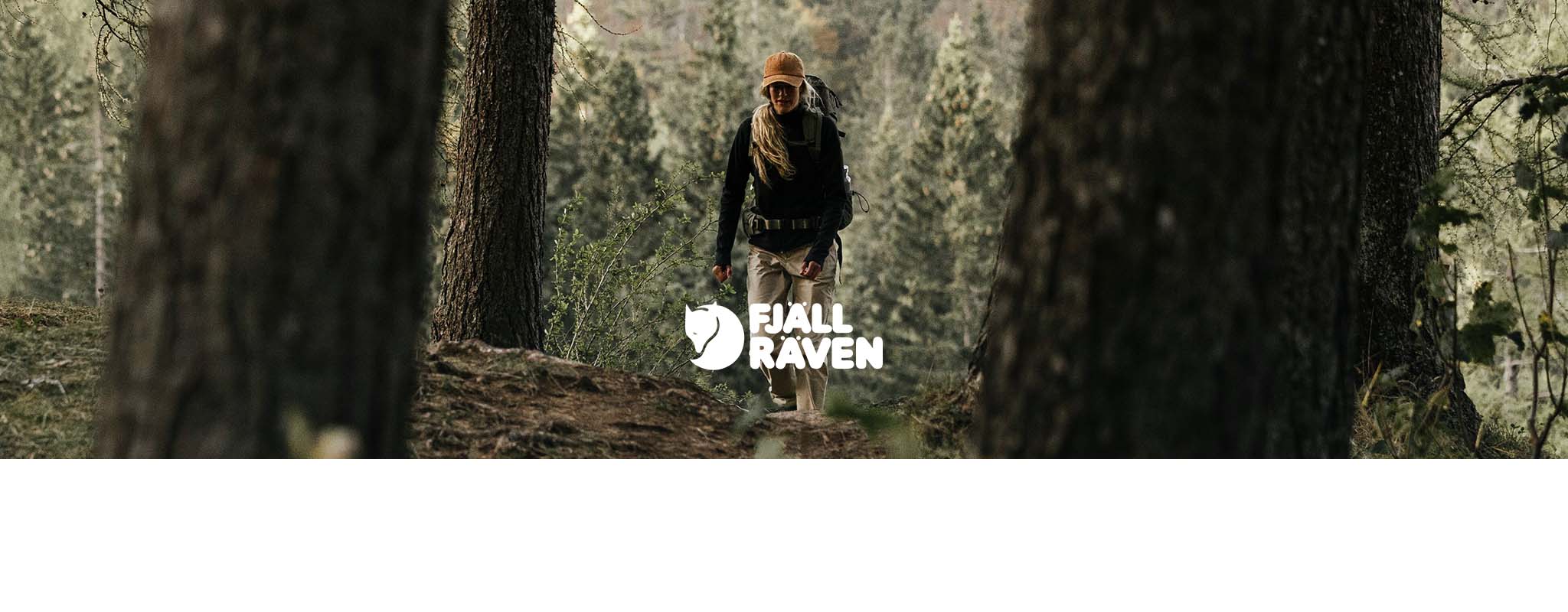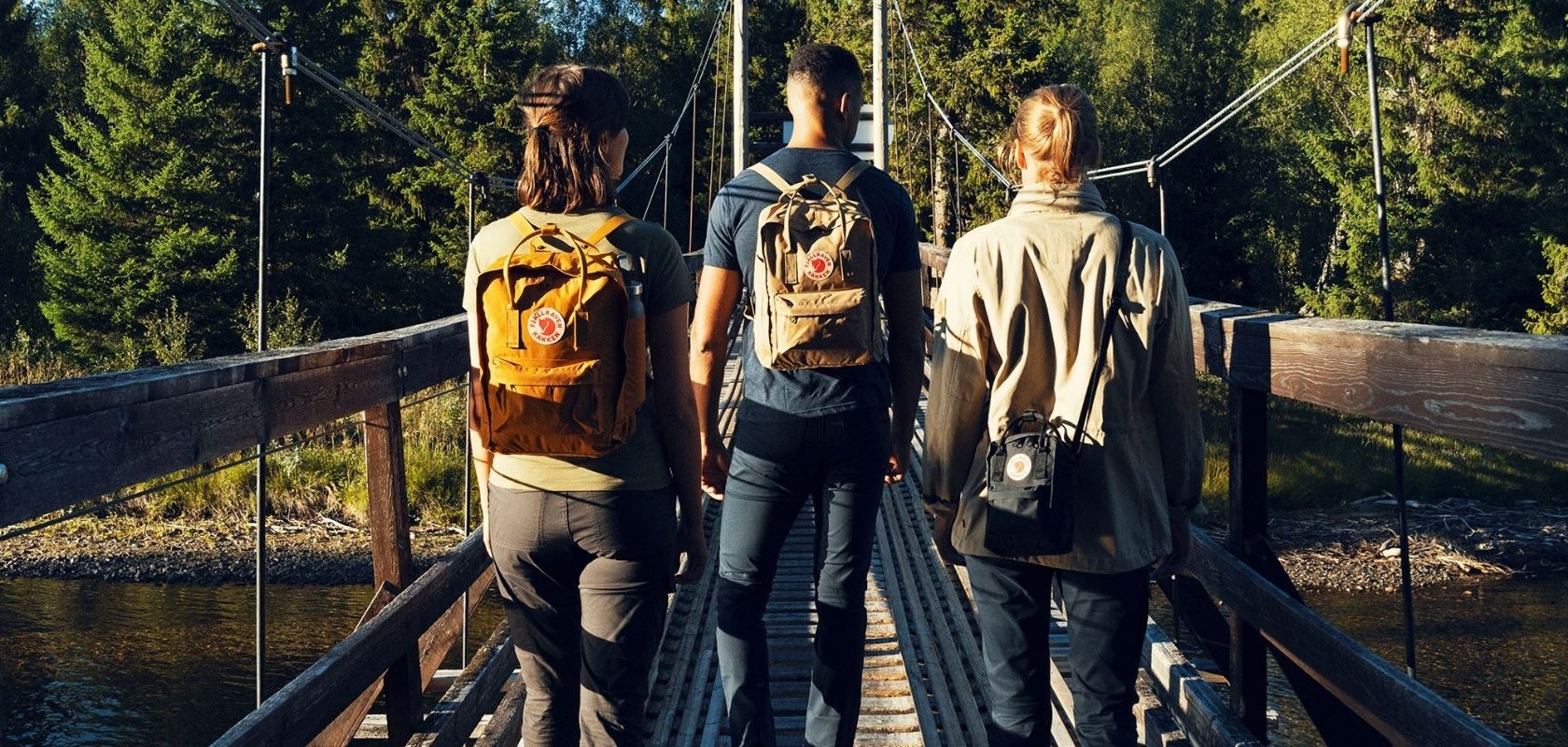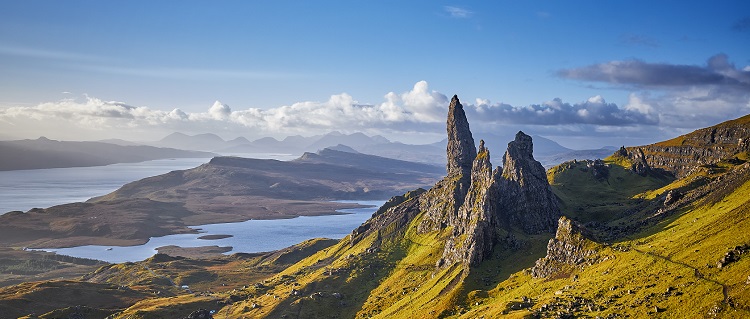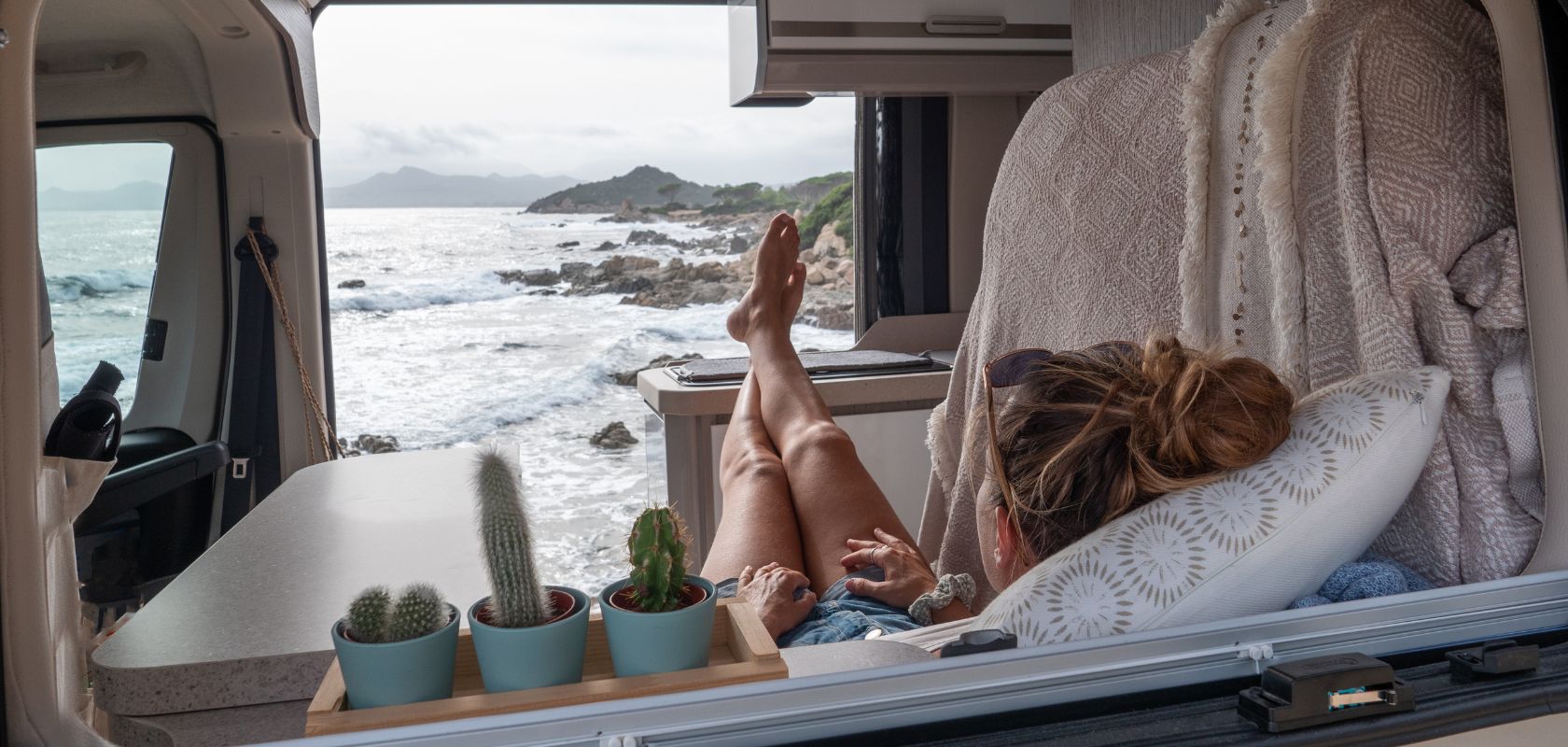DISCOVER FJÄLLRÄVEN: SWEDISH STYLE AND SUSTAINABILITY
Founded in a small Swedish town over 50 years ago, Fjällräven are on a mission to make it easier for everyone to get out and make the most of the outdoors. But with this mission comes a commitment to protecting our wild places, so we and the next generation can continue to push the boundaries of what’s possible.

Guided By Nature
As an outdoor company, Fjällräven are aware of their impact and strive to keep their environmental footprint as small as possible. To achieve this, they’re guided by nature throughout their decision-making processes, from the design to the choice of materials and even where their products are manufactured.
But Fjällräven don’t claim that it’s easy. They acknowledge that compromises are necessary and that sometimes they’re forced to say “no” when they want to say “yes”. They know that they have and will continue to make mistakes, but they want to learn from them. To innovate, adapt and not just settle because they believe there’s always room for improvement.
By producing on nature’s terms, developing clothing and gear that lasts for generations, placing strict standards on themselves and their suppliers and introducing more people to the outdoors, they hope to leave basecamp in better shape than they found it.
The Right Materials
For Fjällräven, choosing the right materials extends to nature and wherever possible, they try to source materials directly from the environment around them. Materials like wool, cotton, and down are key to their designs.
But where these materials don’t prove the right fit, Fjällräven draw on ideas from nature to produce synthetic materials that can withstand the rigours of the trail yet have a minimal environmental impact.

Animal Welfare
Animal welfare is incredibly important to Fjällräven as they rely heavily on animal-derived materials. They want to prevent the mistreatment of animals and any methods that hurt or cause undue suffering.
Their Code of Conduct sets out strict criteria their suppliers must meet to ensure animals are treated humanely. But they’re also seeking full traceability of all their animal-product supply chains. They’ve already achieved this with down and are now setting their sights on wool and leather.
Fjällräven’s Down Promise
Fully traceable down has been a reality at Fjällräven since 2014, and today they have one of the outdoor industry’s most transparent down product chains. Their Down Promise means you can rest assured that no birds were harmed – this means no live-plucking (the down used is a by-product of the food industry), that Fjällräven know where their down comes from, and that it’s of the highest quality.
Fjällräven have established a production chain with strict controls on all suppliers and sub-contractors, and their Down Promise is currently regarded as the best in the industry by Four Paws.
Wool Knows Best
Fjällräven believe wool knows best. It's renewable, biodegradable, durable, soft to the touch, odour resistant, has natural wicking properties and can outperform many high-tech synthetic fibres.
Wool is also excellent at insulating in cold and wet conditions, and there are two main reasons for that. Firstly, the fibres and yarn are bulky, so they trap air which helps keep you warm. Secondly, as wool is hydrophobic on its surface, water doesn’t stick to it, and the tightly woven yarn also helps it shed water.
Wool is adaptable too. Different breeds produce wool with varying properties meaning Fjällräven can use it for multiple applications throughout their clothing and equipment.
But the production of wool isn’t without its issues, that's why for Fjällräven, wool can’t just be any wool. They want to ensure they know where their wool comes from and its impact on the sustainability of animal welfare, society and the environment. As a result, they currently use three types of wool sources: traceable wool, recovered wool (Re-wool) and recycled wool.

Traceable wool
The bulk of Fjällräven’s wool is traceable and comes via The New Zealand Merino Company and holds the ZQ certification. ZQ wool is ethically, environmentally and functionally outstanding and is traceable, down to a collection of approved farms across New Zealand and Australia. It meets strict criteria on animal welfare (based on the UN’s five freedoms of animals), wool fibre quality and environmental, social and economic sustainability.
Recovered wool
Recovered wool is discarded wool that ordinarily would have been burned or ended up in landfill. Fjällräven only use mulesing-free surplus wool from sheep farmers’ seasonal shearing. It’s carefully selected and refined into a high-quality material before being used in one of two ways: as insulating fill in Fjällräven jackets or as a hard-pressed material for the innovative backplate of their backpacks.
Re-wool
Re-Wool is recycled spill wool that comes from pre and post-consumer sources across the globe. It’s colour-sorted, shredded and respun at a site in Italy before being used to make new garments and gear, including Re-Wool jackets, shirts and Kånkens.
No Fluorocarbons
Fluorocarbons are used in the outdoor industry for their water and dirt resistance, but since 2012 Fjällräven have been fluorocarbon-free, as they consider them too damaging to the environment.
Fluorocarbons don’t break down readily in nature. They can be transported vast distances, stored in living organisms and make their way into the food chain. They have been found to impact reproduction and hormone production in mammals and are suspected carcinogens. So, for Fjällräven, it was a no-brainer to switch to fluorocarbon-free impregnation throughout their product range.

Eco-Shell – A High Functioning Shell
Every outdoor brand needs a functioning shell that can perform in challenging conditions, but when Fjällräven set about creating theirs, they wanted it to be different. They wanted to create a tough, breathable material that withstood wind and rain that didn't cause unnecessary harm to nature.
The first step was choosing recycled polyester to reduce their reliance on virgin materials and improve recyclability in the future. They also decided to climate compensate all Eco-Shell garments. But, perhaps most importantly, they chose to use Perfluorocarbons (PFC)-free impregnation.
G1000 – A Cornerstone Fabric
Fjällräven use G1000 in everything from their backpacks and jackets to their trousers. It’s a densely woven fabric made from 65% polyester and 35% cotton that is hardwearing, ventilating, wind-resistance and offers protection from UV rays. When waxed with Greenland Wax, it gains water-resistance and even greater wind-resistance, making it suitable for a variety of different climactic conditions.
Since its launch back in 1968, Fjällräven have developed different versions with specific benefits, from lighter weight fabrics ideal for warmer conditions to eco versions made from recycled polyester and organic cotton.

Timeless Designs
Creating durable clothing that will withstand the rigours of the outdoors is only possible with a timeless design that isn’t swayed by fashion or trends. It’s a foundation of Fjällräven’s design process and something they stick rigorously to. Their ‘Grandma jacket’ story is testament to this longevity and showcases how Fjällräven products can be passed down through generations.
The Grandma Jacket
In 1982, a woman named Gerd Dolva purchased a Fjällräven Räven Jacket, and for the next 20 years, this jacket was a mainstay of Gerd’s wardrobe. She created many memories and forged an emotional connection with it.
In 2002, she passed the jacket on to her granddaughter Christiane Dolva Törnberg, who had just started at Fjällräven as the Head of Sustainability, so that Christiane could make her own memories.
“My grandmother was surprised that she didn’t grow tired of the jacket,” says Christiane Dolva Törnberg - Fjällräven Head of Sustainability. “But she thought it was because she wore it for such a long time and had so many good memories. The jacket was a good all-round piece, and there was always an occasion to wear it.”
“For me now, it is impossible to let go of my grandmother’s jacket. Not only because it’s incredibly functional, but because of the nostalgic value. She was so proud of handing it over to me, it feels like I'm responsible for a piece of our heritage. It’s fallen on me to ensure that it's used and loved for a long time.”
This feeling of responsibility is echoed in Christiane’s mission to extend the life of all Fjällräven products through durability and physical and emotional longevity.
But Christiane is also targeting how to increase the sustainability of garments by decreasing their carbon footprint through longevity. Christiane breaks it down:
“An average jacket has a carbon footprint of about 20 kg CO2 eq. The average Swedish person wears a jacket 140 times. If you divide the carbon footprint by the amount it was worn, you get a measurement of how the carbon footprint was put to good use. But if you can double the number of times the item is worn, the carbon footprint is halved.”

Supporting Communities
For Fjällräven, improving the sustainability of their products isn’t enough. They also want to improve the sustainability of our environment and communities. In 2019, they set up the Arctic Fox Initiative to give back to non-profit organisations working to protect the environment or inspire people to spend more time in nature.
In the UK, in 2020, Fjällräven partnered with the 2-Minute Beach Clean Project and, in 2021, with the 2-Minute Foundation.
Related Articles

Let us know you agree to cookies
We use marketing, analytical and functional cookies as well as similar technologies to give you the best experience. Third parties, including social media platforms, often place tracking cookies on our site to show you personalised adverts outside of our website.
We store your cookie preferences for two years and you can edit your preferences via ‘manage cookies’ or through the cookie policy at the bottom of every page. For more information, please see our cookie policy.




